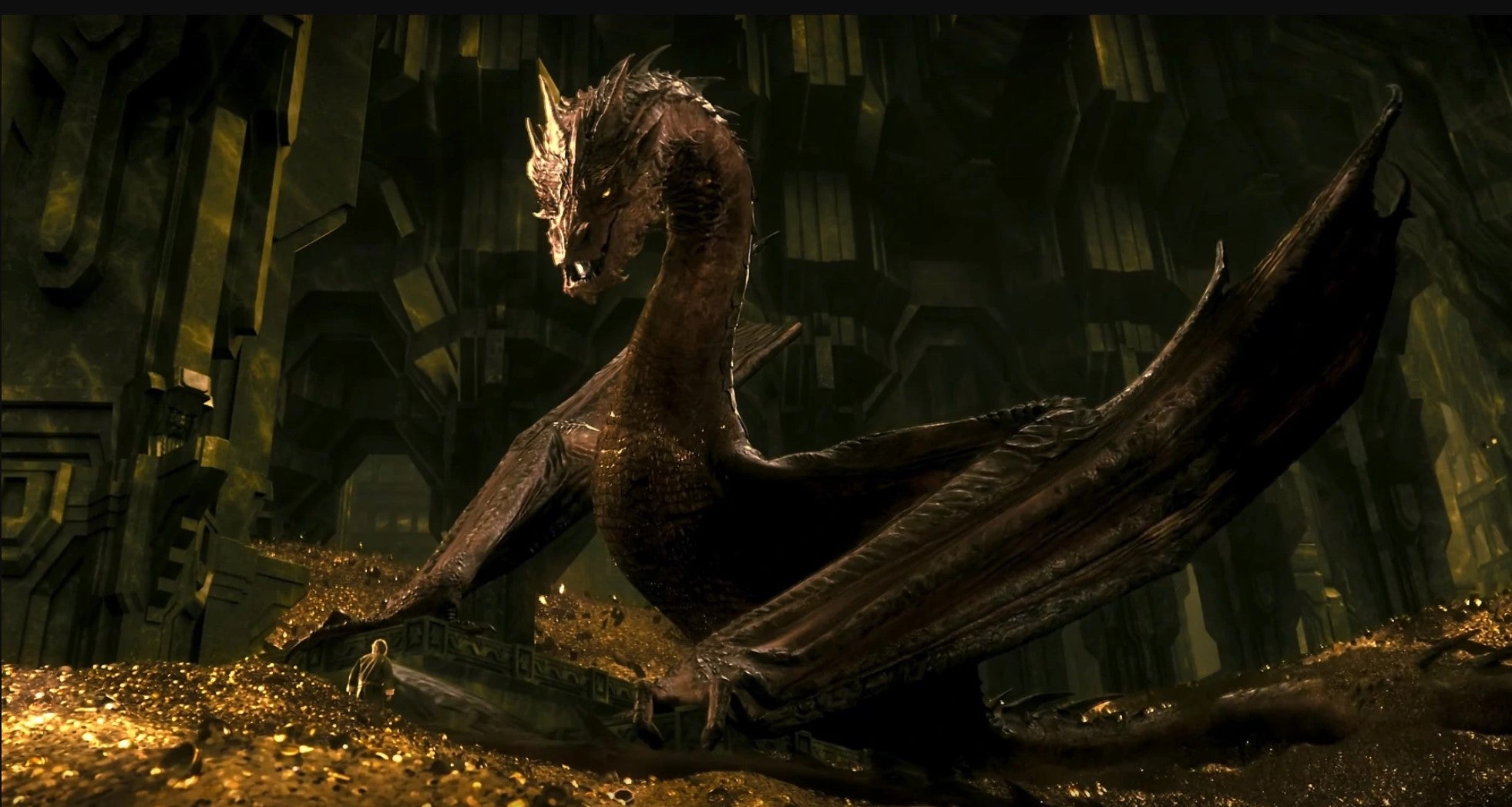Popularized in modern times, dragons were always part of the Norse culture and religion. Jörmungandr, Nidhögr, Fafnir and others, these are the original dragons of myth and legend.

The Dragon Smaug from the Movie The Hobbit was strongly inspired by the Dragon Fafnir
Dragons are mentioned in various legends, sagas, chronicles, and skaldic poems during the Viking Age in both Iceland and Denmark. Such prominent literary works include the Völuspá, one of the earliest and most well known poems written in Old Norse; the Völsung cycle, a series of renowned Norse legends recorded in medieval Iceland and as rock carvings in Norway, Sweden, and England; and the Gesta Danorum, a 12th century chronicle authored by Saxo Grammaticus, which recounts the history of the Danes.
By far, the most well known Norse dragons are Jörmungandr (the Midgard Serpent), Níðhöggr (Nidhogg), Fáfnir, and a certain unnamed dragon killed by Frotho I, a legendary King of the Danes portrayed in Gesta Danorum.
Jörmungandr
Jörmungandr (literally ‘great beast’), one of the offsprings of giantess Angrboða (Angrbroda) and trickster God Loki, is the humongous sea serpent which dwells in the ocean that encircles Midgard (the realm of humankind in Norse cosmology). Its nemesis is Thor, the God of Thunder, protector of mankind. During Ragnarok Thor is destined to slay Jörmungandr, dying after walking nine paces from his slain foe, due to the dragon’s poison.

Artistic depiction of Thor fighting the sea serpent from ‘Asgard Stories: Tales from Norse Mythology’ by Foster, Mary H. (1901)
Níðhöggr
Níðhöggr (literally ‘malice striker’ in English, as the Old Nose term ‘níð’ meant loss of honor in the Norse society and ‘höggr’ striker respectively) appears in the Old Norse texts as an atrocious creature which gnaws the roots of the World Tree Yggdrasil.

Nidhöggr, as depicted in a 17th century Icelandic manuscript.
Fáfnir
Fáfnir, initially the son of King Hreiðmarr (Hreidmar) of the dwarves, was cursed by magical ring with insatiable greed, which ended transforming him into a dragon. The ring was once property of another dwarf called Andvari, and became cursed due to one of Loki’s schemes (read more here). Fafnir ended his days slain by Sigurd, a legendary Norse hero.
Fáfnir might have been the basis for the fantasy dragon Smaug from J.R.R. Tolkien’s first high fantasy novel ‘The Hobbit’ published in 1937, which further delves into the so-called ‘dragon sickness’ for gold.
It can also be said that much of the information on the dwarves stemming from the Norse Eddas and Sagas was adapted into Tolkien’s work, particularly in ‘The Hobbit’, where some dwarves shown many characteristics found in their counterparts in the Völsunga saga and the Prose Edda of Snorri Sturluson.

Sigurd fighting Fafnir, as imagined by English illustrator Arthur Rackham.
Gesta Danorum
Bearing striking similarly to the story of Fáfnir and his gold treasure, the 12th century Gesta Danorum (literally ‘The Deeds of the Danes’) written by Saxo Grammaticus tells the saga of the legendary Danish king Frode I (Frotho I in English). The book tells of one of king Frode’s traves in which he found an island where a dragon had his nest in a cave, on the side of a mountain. The dragon had an immense hoard and Frode immediately coveted it. Just as with the dwarves, Frotho might have also inspired Tolkien in creating the hobbit Frodo (although this could be a mere coincidence with respect to their names).
Dragons were a powerful symbol strength, power, and bravery during the Viking Age and were commonly depicted in the longships of the time, decorating bows and sterns, giving them names such as Drakar and Snekja, promoting the legendary dragon as a major tool of intimidation during the Viking Age.

Sources
Simek, Rudolf. 2007 (1993). Translated by Angela Hall. Dictionary of Northern Mythology. D.S. Brewer. ISBN 0-85991-513-1
Orchard, Andy. 1997. Dictionary of Norse Myth and Legend. Cassell. ISBN 0-304-34520-2
Jesse Byock (2005) Snorri Sturluson, The Prose Edda. 1st. edition. London, England: Penguin Books Ltd. ISBN-13 978-0-140-44755-2
Daniel McCoy. 2016. The Viking Spirit: An Introduction to Norse Mythology and Religion. 1st edition. CreateSpace Independent Publishing Platform. ISBN-13 978-1533393036
Guerber, Hélène Adeline. 1895. Myths of the Northern Lands. American Book Company. ISBN 978-1-4400-9296-1
Ellis-Davidson, Hilda Roderick. 1964. Gods and Myths of Northern Europe. ISBN-13 978-0140136272
Tolkien, Christopher, ed. 1988. The Return of the Shadow: The History of The Lord of the Rings. ISBN 0-04-440162-0.












